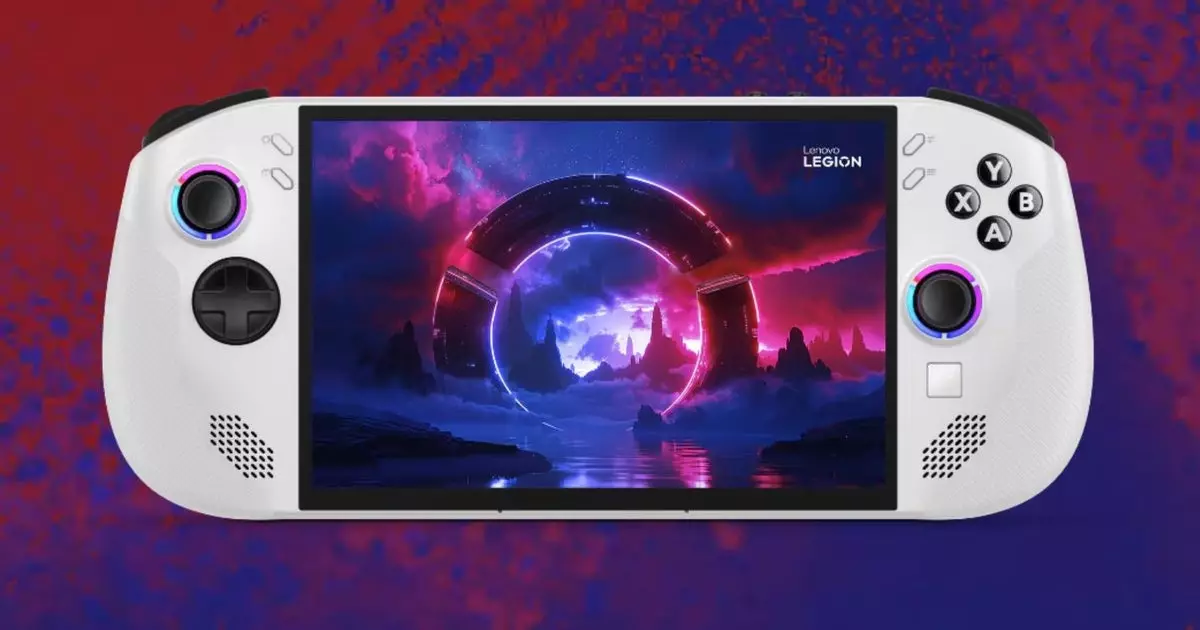The gaming landscape is continually evolving, with companies striving to carve out niches in a fiercely competitive market. Amidst this turmoil, Lenovo is preparing to launch its latest gaming handheld, the Lenovo Legion Go S. This new device promises not only an innovative design but also the distinction of being the first licensed SteamOS handheld outside of Valve’s own Steam Deck line – an accomplishment that could signify a significant shift in gaming technology.
Historically, manufacturers have gravitated toward Windows 11 for portable gaming due to its vast library of compatible games. Yet, this choice has its pitfalls, particularly related to performance on smaller devices. Windows doesn’t typically cater well to touchscreens and compact interfaces, which can lead to frustrating user experiences. Thankfully, the Lenovo Legion Go S is set to remedy that by leveraging SteamOS. This operating system has been tailored for handheld devices, enhancing user interface responsiveness while still providing easy access to a desktop mode for those who need it. With SteamOS gaining traction on non-Valve devices, Lenovo’s move could potentially reshape how manufacturers approach handheld gaming.
Design and Specifications
One of the most notable shifts from the original Legion Go is the physical design of the Go S. By adopting a fixed chassis, Lenovo opts for a more traditional look, shedding the previously utilized detachable controllers. This has resulted in the device’s weight reduction from 854 grams to an impressive 730 grams. The display has also seen a reduction in size, featuring an 8-inch 1200p panel with a refresh rate of 120Hz. This change is a savvy adjustment, as it rectifies the previous model’s over-spec’d display that often slowed down performance and battery life. Coupled with the choice of either the existing Ryzen Z1 Extreme or the new Ryzen Z2 Go processor, consumers are presented with options that could match varying performance needs and budget considerations.
Performance and Pricing Strategy
Pricing is a critical aspect of the Lenovo Legion Go S’s appeal. The device is positioned to undercut the Steam Deck OLED model, making it an attractive option for consumers who want a quality gaming experience at a lower price point. The Ryzen Z1 Extreme variant is set at $729, while the Ryzen Z2 Go edition targets cost-conscious gamers at $599. This strategic pricing aims to draw in a broader audience and potentially shift market dynamics. However, consumers must weigh the performance differences between the two processors—a detail that remains uncertain until further benchmarks are released.
In terms of battery life and usability, the Go S includes a 55Whr battery, an upgrade from its predecessor by 5WHr. With the reduced display specs and overall weight, there’s optimism surrounding extended gaming sessions without constant recharging. Additionally, the device features Hall Effect joysticks and a compact trackpad on the side, designed for intuitive navigation, although it may not match the extensive haptic capabilities of other available options. These enhancements contribute to a more refined gaming experience, making the Legion Go S a promising addition to gamers’ arsenals.
A Unique Offer in a Crowded Market
While the absence of detachable controllers might be seen as a drawback, Lenovo’s decision appears to align with the broader trend towards more streamlined gaming devices. The focus on integrating SteamOS enhances the handheld’s usability, making it a strong contender in a market dominated by similar products. With a robust 1TB storage option at the base price, it offers a significant advantage over its competitors.
While questions surrounding performance and battery life remain, the Lenovo Legion Go S represents a forward-thinking approach to handheld gaming. With its compelling combination of design, pricing, and usability, it is set to attract attention and could ultimately challenge established competitors. As the device approaches its release, gaming enthusiasts have every reason to remain optimistic about Lenovo’s latest innovation.

